Perhaps you're thinking that espresso isn't one of the arts education disciplines traditionally found in state standards. That may be so. Nevertheless, if you don't know espresso as an art form, perhaps it's time to join the third wave, The Third Wave of Coffee that is. I think the best place to start with espresso art is with a look. Here's one for you:
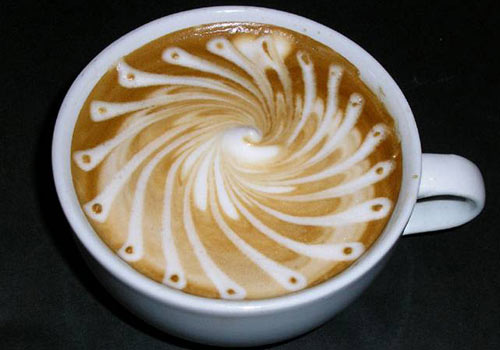 Here's another, a bit more traditional:
Here's another, a bit more traditional:
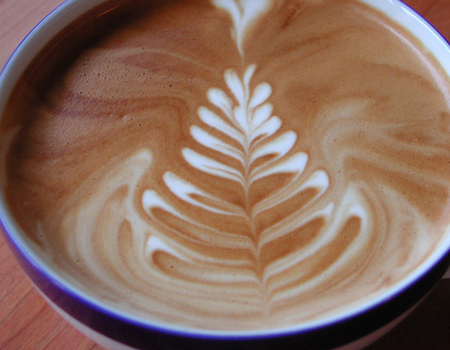 And what the hell, one more:
And what the hell, one more:
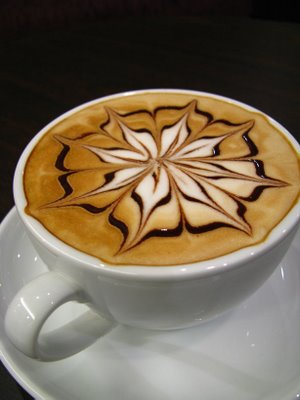 This is what is known as latte art. And yes, I can do some of it, but not all of it, because I use skim milk which doesn't expand when frothed the way whole milk does (it's all in the fat content).
This is what is known as latte art. And yes, I can do some of it, but not all of it, because I use skim milk which doesn't expand when frothed the way whole milk does (it's all in the fat content).
The art is not just in the latte making. It's in how the espresso is ground, placed in the portafilter (the small metal filter in the espresso handle that holds the ground espresso), how the espresso is pressed (tamped) down in the filter with the tamper, and exactly how long you allow the water to pass through the compressed espresso (what is referred to as a pull).
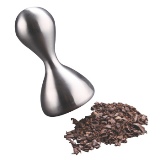
All of these things interact, including the type of bean or beans used in the roast, the duration of the roast, the kind of roaster used, how old the beans are, how hot the water is, how much pressure the water is under, and even the temperature/humidity in the room.
Some of you may wonder why anyone would ever undertake such an endeavor. And of course, this does not include what goes into the frothing, if you choose to make a latte/cappuccino, etc.
Go to one of the great Third Wave espresso joints and order an espresso. Many of these places pull what is called a Triple Ristretto, which is a very short pull (less water), with a third more beans packed into the portafilter, which in the hands of a master barista will produce a shot that is mostly crema (that cream on the top of the espresso) and relatively little liquid. It will have a wildly different taste then you have ever tasted before. Forget that little bit of lemon peel you've had on the side.
Here's a pic:
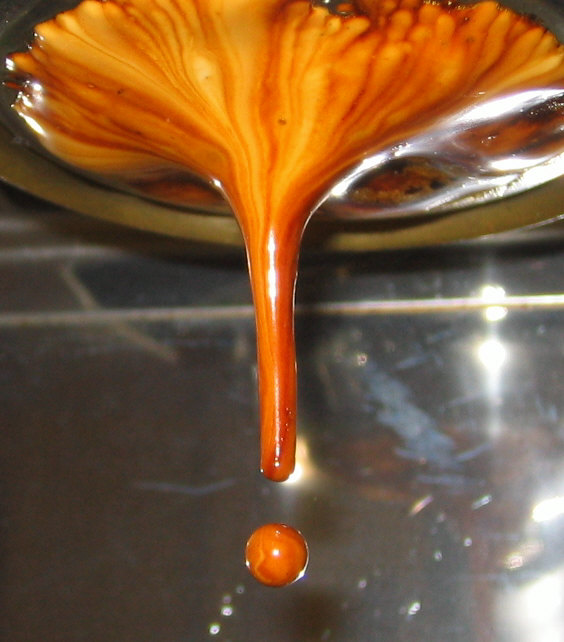 How about that!!!! See all the colors, the reds and browns--
How about that!!!! See all the colors, the reds and browns--
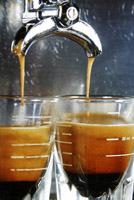 believe me, this is all crema, all the time. If you order an espresso and it's beige, and there's only a little bit of crema at the top, which is how it served at about 99% of the places across the country even today, well, it's going to be sour, thin, and well, a waste of calories, not to mention a waste of time and money. I guess the caffeine delivery will remain intact, which is vital, I give you that.
believe me, this is all crema, all the time. If you order an espresso and it's beige, and there's only a little bit of crema at the top, which is how it served at about 99% of the places across the country even today, well, it's going to be sour, thin, and well, a waste of calories, not to mention a waste of time and money. I guess the caffeine delivery will remain intact, which is vital, I give you that.
For many years, espresso in America was limited to a few Italian restaurants, just the small minority that had some connection to Italy, I guess, and wanted to offer a homeland drink on the menu. That being said, the stuff was horrendous, as is much of the espresso I encounter today, even with the Third Wave. Go to Starbucks and order an espresso, if you want to see what I mean. Yikes. The little lemon peel they used to serve with the espresso was to counteract the terrible bitterness of the vile drink.
In 1992 I went to Italy for the first time, and got hooked on espresso. It wasn't at the fancy cafes, but rather at these highway-side restaurants off the autostrada called Autogrill. You could get great pannini, sit down for a very good bowl of pasta, and sidle up to the bar for these fantastic espressi that the baristi were cranking out one after the other. The Italians would add sugar, and just down the espresso in practically one gulp, leave a small tip on the counter, and then bolt for their la macchina to continue along on merry caffeinated way...
I was hooked.
The day after returning to New York, I bought my first espresso machine: A DeLonghi. Then I went to a Baby Gaggia. Then I went to Liva 90. Today, I own a Vetrano by Quickmill.
This:
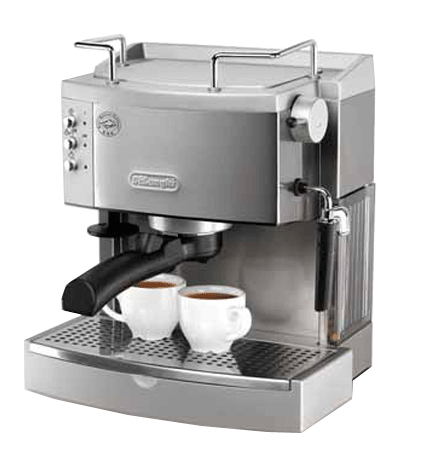
begat this:
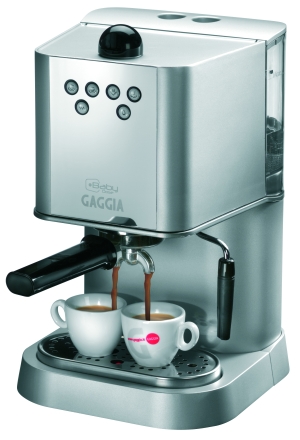
which begat this:
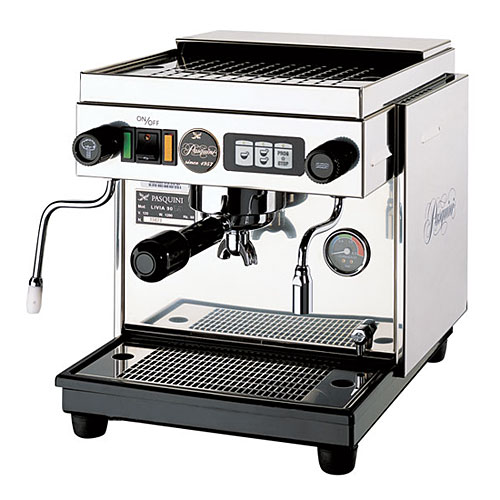 Now this:
Now this:
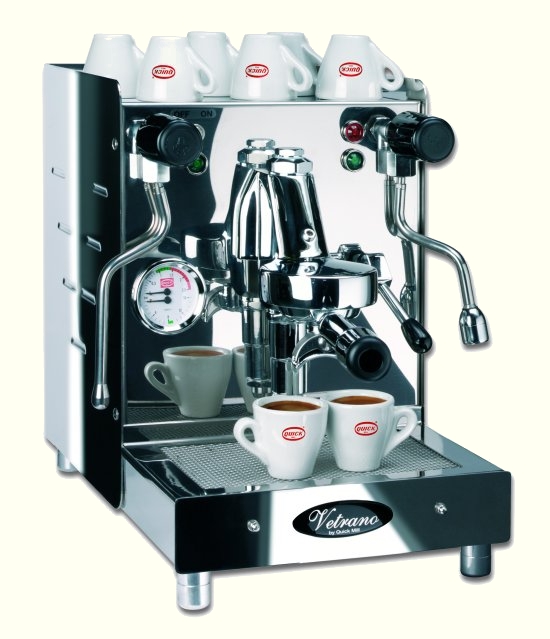 The Vetrano is plumbed in directly to my cold water line, so I never have to manually add water. The line is double filtered, for sediment and for minerals. I did it all myself...
The Vetrano is plumbed in directly to my cold water line, so I never have to manually add water. The line is double filtered, for sediment and for minerals. I did it all myself...
And of course, you've got to have a great grinder:
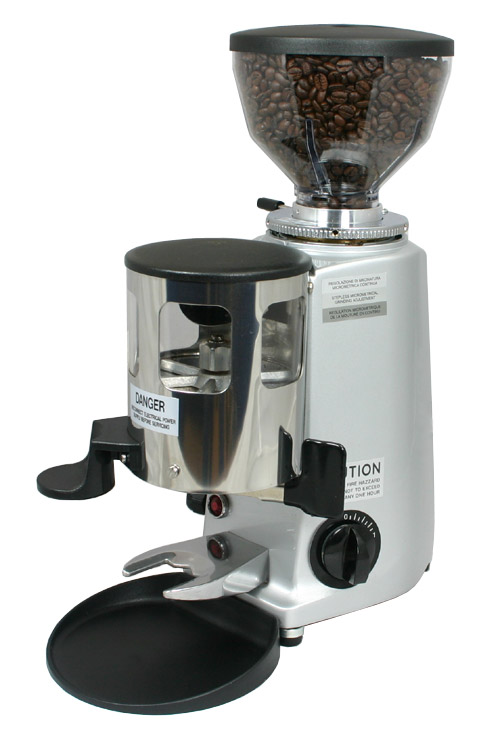 The approach to espresso is regional. In Italy, if you go North, the espresso is smoother; the beans are chocolate in color, not black. Very far north, in say a place like Trento, they will give you espresso, and a small beaker of cold milk, as well as a small beaker of warm milk, for you to create your own macchiato.
The approach to espresso is regional. In Italy, if you go North, the espresso is smoother; the beans are chocolate in color, not black. Very far north, in say a place like Trento, they will give you espresso, and a small beaker of cold milk, as well as a small beaker of warm milk, for you to create your own macchiato.
Try the espresso in Naples. There's a splendid place right across from the Teatro San Carlo (the opera house): Gran Caffe Gambrinus. They've got these wild espresso machines with super long handles that control the pull. It's looks very much like the splendid cafes in Vienna, where Lenin and Freud hung out (Cafe Central).
The place in Naples serves a very short pull that is almost burned and sort of spicy. It's a southern Italian approach. A northerner would probably spit it out...
There are two places in Rome that I absolutely love, and they are both right near the Pantheon. Cafe Tazzo d'Oro and Cafe Sant'Eustachio.
Tazza D'Oro has a Jamaica Blue Mountain roast espresso, that is a one of a kind. They have these ancient roasters right there in the cafe. D'Oro keeps their cups warmed to the perfect temperature prior to the pull by keeping them in a water bath.
Go Northwest in the US, and the beans are black. That's the kind of espresso you get in the Fotomats converted to drive-through espresso joints. Ever see one of them? (Oddly enough, in this over-caffeinated region of the US, they have bikini-clad espresso servers) The Northwest style espresso is, I am sorry to say, not my cup of coffee...
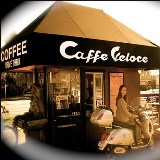
In the last few years things have really taken off in New York City and beyond: there are amazing roasters and espresso places all over the country. Take a look at Intelligentsia, which is where I get my beans delivered from right to my home, every two weeks come rain or shine; Stumptown; Counter Culture Coffee; Novo, and many others.
If you want to roast your own, here's a great website for that: Sweet Maria's.
 Here's another, a bit more traditional:
Here's another, a bit more traditional: And what the hell, one more:
And what the hell, one more: This is what is known as latte art. And yes, I can do some of it, but not all of it, because I use skim milk which doesn't expand when frothed the way whole milk does (it's all in the fat content).
This is what is known as latte art. And yes, I can do some of it, but not all of it, because I use skim milk which doesn't expand when frothed the way whole milk does (it's all in the fat content).The art is not just in the latte making. It's in how the espresso is ground, placed in the portafilter (the small metal filter in the espresso handle that holds the ground espresso), how the espresso is pressed (tamped) down in the filter with the tamper, and exactly how long you allow the water to pass through the compressed espresso (what is referred to as a pull).

All of these things interact, including the type of bean or beans used in the roast, the duration of the roast, the kind of roaster used, how old the beans are, how hot the water is, how much pressure the water is under, and even the temperature/humidity in the room.
Some of you may wonder why anyone would ever undertake such an endeavor. And of course, this does not include what goes into the frothing, if you choose to make a latte/cappuccino, etc.
Go to one of the great Third Wave espresso joints and order an espresso. Many of these places pull what is called a Triple Ristretto, which is a very short pull (less water), with a third more beans packed into the portafilter, which in the hands of a master barista will produce a shot that is mostly crema (that cream on the top of the espresso) and relatively little liquid. It will have a wildly different taste then you have ever tasted before. Forget that little bit of lemon peel you've had on the side.
Here's a pic:
 How about that!!!! See all the colors, the reds and browns--
How about that!!!! See all the colors, the reds and browns-- believe me, this is all crema, all the time. If you order an espresso and it's beige, and there's only a little bit of crema at the top, which is how it served at about 99% of the places across the country even today, well, it's going to be sour, thin, and well, a waste of calories, not to mention a waste of time and money. I guess the caffeine delivery will remain intact, which is vital, I give you that.
believe me, this is all crema, all the time. If you order an espresso and it's beige, and there's only a little bit of crema at the top, which is how it served at about 99% of the places across the country even today, well, it's going to be sour, thin, and well, a waste of calories, not to mention a waste of time and money. I guess the caffeine delivery will remain intact, which is vital, I give you that.For many years, espresso in America was limited to a few Italian restaurants, just the small minority that had some connection to Italy, I guess, and wanted to offer a homeland drink on the menu. That being said, the stuff was horrendous, as is much of the espresso I encounter today, even with the Third Wave. Go to Starbucks and order an espresso, if you want to see what I mean. Yikes. The little lemon peel they used to serve with the espresso was to counteract the terrible bitterness of the vile drink.
In 1992 I went to Italy for the first time, and got hooked on espresso. It wasn't at the fancy cafes, but rather at these highway-side restaurants off the autostrada called Autogrill. You could get great pannini, sit down for a very good bowl of pasta, and sidle up to the bar for these fantastic espressi that the baristi were cranking out one after the other. The Italians would add sugar, and just down the espresso in practically one gulp, leave a small tip on the counter, and then bolt for their la macchina to continue along on merry caffeinated way...
I was hooked.
The day after returning to New York, I bought my first espresso machine: A DeLonghi. Then I went to a Baby Gaggia. Then I went to Liva 90. Today, I own a Vetrano by Quickmill.
This:

begat this:

which begat this:
 Now this:
Now this: The Vetrano is plumbed in directly to my cold water line, so I never have to manually add water. The line is double filtered, for sediment and for minerals. I did it all myself...
The Vetrano is plumbed in directly to my cold water line, so I never have to manually add water. The line is double filtered, for sediment and for minerals. I did it all myself...And of course, you've got to have a great grinder:
 The approach to espresso is regional. In Italy, if you go North, the espresso is smoother; the beans are chocolate in color, not black. Very far north, in say a place like Trento, they will give you espresso, and a small beaker of cold milk, as well as a small beaker of warm milk, for you to create your own macchiato.
The approach to espresso is regional. In Italy, if you go North, the espresso is smoother; the beans are chocolate in color, not black. Very far north, in say a place like Trento, they will give you espresso, and a small beaker of cold milk, as well as a small beaker of warm milk, for you to create your own macchiato.Try the espresso in Naples. There's a splendid place right across from the Teatro San Carlo (the opera house): Gran Caffe Gambrinus. They've got these wild espresso machines with super long handles that control the pull. It's looks very much like the splendid cafes in Vienna, where Lenin and Freud hung out (Cafe Central).
The place in Naples serves a very short pull that is almost burned and sort of spicy. It's a southern Italian approach. A northerner would probably spit it out...
There are two places in Rome that I absolutely love, and they are both right near the Pantheon. Cafe Tazzo d'Oro and Cafe Sant'Eustachio.
Tazza D'Oro has a Jamaica Blue Mountain roast espresso, that is a one of a kind. They have these ancient roasters right there in the cafe. D'Oro keeps their cups warmed to the perfect temperature prior to the pull by keeping them in a water bath.
Go Northwest in the US, and the beans are black. That's the kind of espresso you get in the Fotomats converted to drive-through espresso joints. Ever see one of them? (Oddly enough, in this over-caffeinated region of the US, they have bikini-clad espresso servers) The Northwest style espresso is, I am sorry to say, not my cup of coffee...

In the last few years things have really taken off in New York City and beyond: there are amazing roasters and espresso places all over the country. Take a look at Intelligentsia, which is where I get my beans delivered from right to my home, every two weeks come rain or shine; Stumptown; Counter Culture Coffee; Novo, and many others.
If you want to roast your own, here's a great website for that: Sweet Maria's.
So, where do I go in NYC when I want a great triple ristretto? Cafe Grumpy; Joe the Art of Coffee, and Ninth Street Espresso. Fortunately, my work takes me to the Tweed Courthouse and the offices of the City Council and State Legislature in downtown Manhattan. There is a great joint on Chambers Street, that only serves a double ristretto: Blue Spoon, but they use Intelligentsia's Black Cat Espresso. Intelligentsia, based in Chicago, doesn't do the triple pull either. Nevertheless, one of their baristi was the reining champ of the World Barista Competition.
My pal Harold Meltzer swears by Abraço in the East Village, I haven't been there yet, but what does he know?
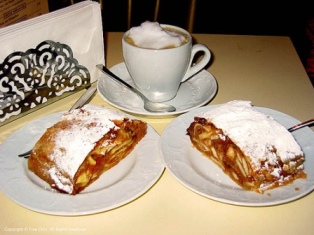 For those who like Kaffee mit Schlag and a nice Viennese pastry, New York City now has
For those who like Kaffee mit Schlag and a nice Viennese pastry, New York City now hasan official outpost of one of the great Viennese Cafes: Demel. It's a very different kind of coffee, but just splendid, particularly with the fresh creme (schlag), the kind your cardiologist lectures against. If you make it there, try the topfen strudel, which is a sweet cheese strudel. Another thing your cardiologist won't like. And if you don't have a cardiologist, keep going to Demel, for it's a sure route for getting one, schnell.
Go into any of these Third Wave places, and you will see something new: the barista will pull the shot, smell it, taste it, and then very likely toss it in the trash. Then she or he will make the adjustment for all the things I mentioned earlier, and try again. Sometimes it will be the third or fourth pull that you will be served. It could be sour, thin, bitter; they're looking for just the right taste and smell, and they make adjustments even as the pull is happening, based on the color and density of the espresso coming out of the machine. When it's right, they serve it. Otherwise into the knock box and down the drain it goes.
So, there you have it. An Espresso Arts Education for the last Friday in May. While some of you may be thinking "get a life," I do want to point out that the thoughtfulness, the care, the science, the art, the history, and all of the other little things that go into this little world of espresso are indeed an art form, perhaps more of the art of living or the everyday art of life.
When people think that arts education is elite, I point to the art of espresso, or the art of gardening, or the art of entertaining, or the art of writing a personal letter or note, or the art of how your greet someone--the ways in which the an artful existence is all around us and within us, which makes us better, and certainly, well, more artful.

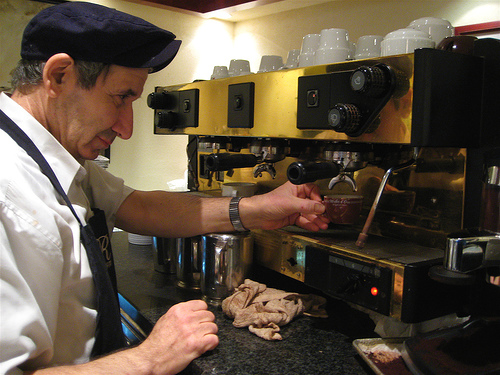
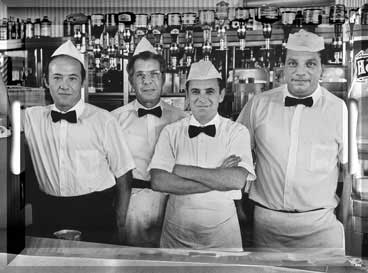
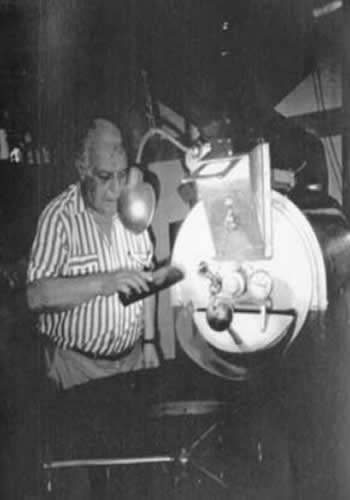
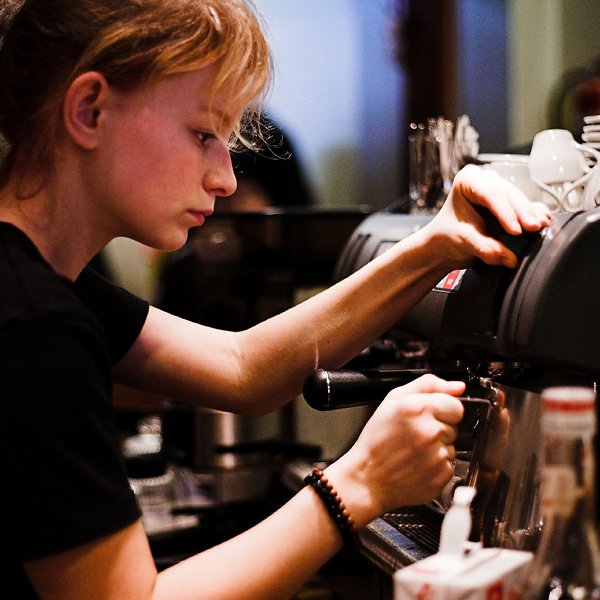 Espresso Arts Education
Espresso Arts Education
No comments:
Post a Comment
Hi, please feel free to share your comment here.
For example: Which pictures is the best?
Thanks,
Admin